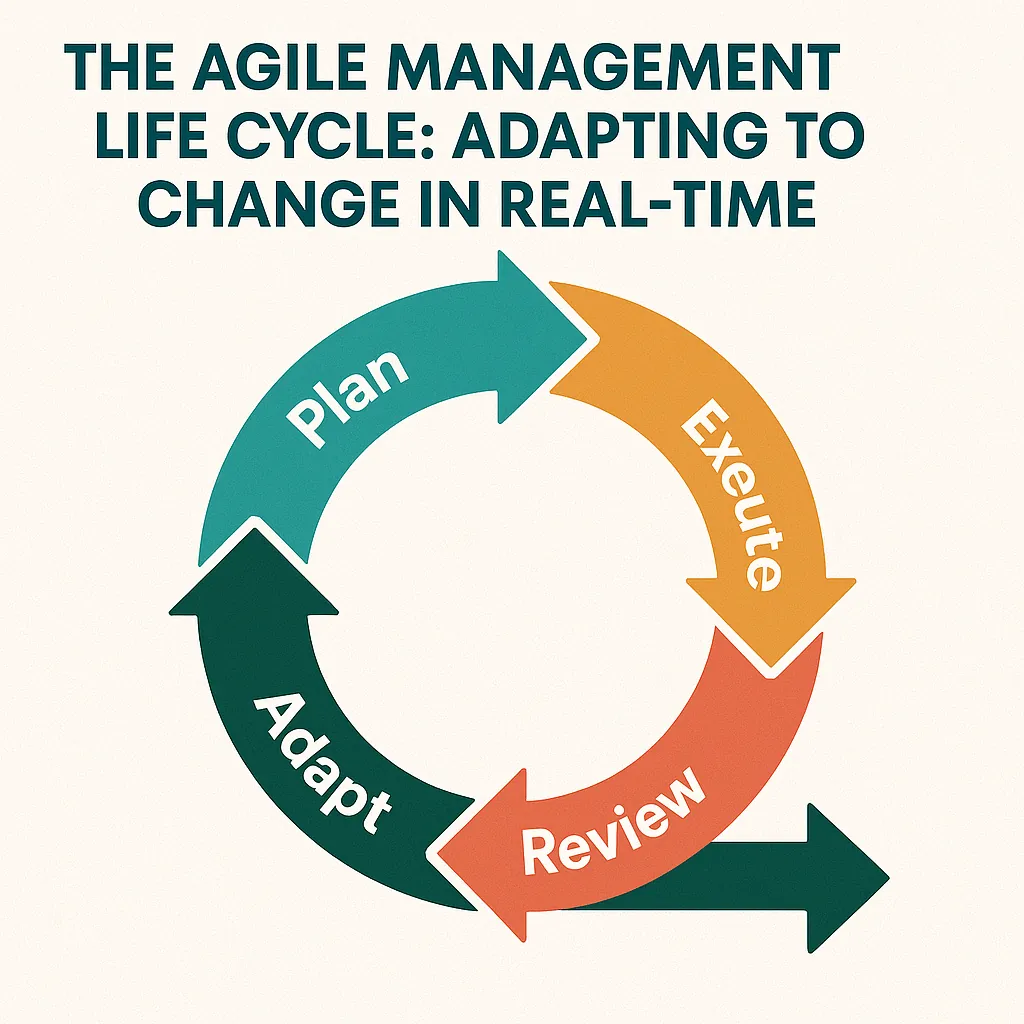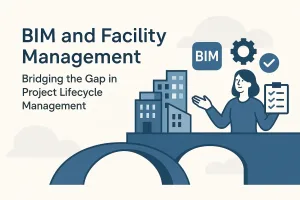Introduction to the Agile Management Life Cycle
The management life cycle serves as a structured framework that guides projects from initiation through to completion. Traditionally, this life cycle is divided into distinct phases: initiation, planning, execution, monitoring and controlling, and closing. Each phase is sequential, emphasizing thorough planning and control, which can sometimes lead to rigidity in adapting to changes. This traditional approach, while effective in stable environments, often struggles to accommodate the dynamic nature of modern projects, where requirements can shift rapidly due to market demands or technological advancements.
Defining the Management Life Cycle in Traditional Project Management
The traditional management life cycle is characterized by its linear progression through the following phases:
- Initiation: Defining the project scope, objectives, and stakeholders.
- Planning: Developing a detailed project plan that outlines tasks, timelines, resources, and budgets.
- Execution: Implementing the project plan, coordinating resources, and managing team dynamics.
- Monitoring and Controlling: Tracking project progress against the plan, making adjustments as necessary to stay on course.
- Closing: Finalizing all project activities, delivering the final product, and conducting post-project evaluations.
This structured approach provides clarity and control, but it can also lead to challenges in responsiveness and flexibility, particularly in industries where change is constant.
Introducing the Agile Management Life Cycle as an Adaptive Alternative
In contrast, the Agile management life cycle offers a more flexible and iterative approach to project management. Agile methodologies, such as Scrum and Kanban, emphasize collaboration, customer feedback, and rapid iterations. The Agile life cycle typically includes the following key components:
- Iteration Planning: Teams plan short cycles (sprints) to deliver incremental value.
- Execution: Work is completed in small, manageable increments, allowing for frequent reassessment and adaptation.
- Review and Retrospective: At the end of each iteration, teams review their work and gather feedback, fostering continuous improvement.
- Adaptation: Based on feedback and changing requirements, teams can pivot and adjust their plans to better meet project goals.
This iterative process not only enhances responsiveness but also encourages stakeholder engagement throughout the project, ensuring that the final product aligns closely with user needs.
Highlighting the Need for Agility in Today’s Fast-Paced Business Environment
In today’s fast-paced business environment, the ability to adapt quickly to change is paramount. Organizations face increasing pressure to innovate and respond to market shifts, making agility a critical component of successful project management. The Agile management life cycle addresses this need by:
- Enhancing Responsiveness: Agile teams can quickly adjust their priorities and deliverables based on real-time feedback and changing conditions.
- Fostering Collaboration: Continuous communication among team members and stakeholders ensures that everyone is aligned and can contribute to the project’s success.
- Encouraging Innovation: By allowing for experimentation and iterative development, Agile methodologies promote creative solutions and improvements.
Understanding the Traditional Management Life Cycle
The traditional management life cycle in project management is a structured approach that outlines the stages a project goes through from inception to completion. This model is often referred to as the Waterfall model, characterized by its linear progression through distinct phases. Below are the key stages of the traditional management life cycle, along with an exploration of its limitations and challenges.
Stages of the Traditional Management Life Cycle
- Initiation: This is the first phase where the project is defined at a high level. Key activities include identifying project goals, stakeholders, and feasibility studies. A project charter is often created to formalize the project’s existence.
- Planning: In this phase, detailed planning occurs. Project managers develop a comprehensive project plan that outlines the scope, schedule, resources, and budget. Risk management strategies are also formulated to address potential issues.
- Execution: The execution phase involves the implementation of the project plan. Teams carry out the tasks defined in the planning phase, and resources are allocated to ensure project deliverables are met.
- Monitoring & Controlling: This phase runs concurrently with execution and involves tracking project performance against the project plan. Key performance indicators (KPIs) are monitored, and adjustments are made as necessary to keep the project on track.
- Closure: The final phase involves the formal completion of the project. This includes finalizing all activities, obtaining stakeholder acceptance, and conducting a post-project evaluation to identify lessons learned.
Limitations of Traditional Methodologies
- Linear Nature: The traditional management life cycle is inherently linear, meaning that each phase must be completed before the next one begins. This rigidity can lead to challenges when changes are required, as revisiting earlier phases can be time-consuming and costly.
- Inflexibility: Traditional methodologies often struggle to adapt to changes in project scope or requirements. Once the planning phase is complete, any significant changes can disrupt the entire project flow, leading to delays and increased costs.
- Delayed Feedback: In traditional project management, feedback is typically gathered at the end of the project or at specific milestones. This can result in issues being identified too late in the process, making it difficult to implement necessary changes without significant rework.
Common Challenges Faced in Traditional Management Approaches
- Resistance to Change: Teams accustomed to a linear approach may resist adopting new methodologies or adapting to changes, leading to a lack of innovation and responsiveness.
- Communication Gaps: The structured nature of traditional methodologies can create silos within teams, leading to communication breakdowns and misalignment on project goals.
- Resource Constraints: Traditional approaches often require a fixed allocation of resources, which can lead to inefficiencies if project needs change or if unexpected challenges arise.
Core Principles of Agile Methodologies
Agile methodologies have revolutionized the traditional management life cycle by emphasizing adaptability, collaboration, and customer-centric approaches. Understanding the foundational principles of Agile is essential for Agile practitioners and PMO leaders who aim to implement these methodologies effectively. Here are the core principles that underpin Agile methodologies:
1. The Agile Manifesto and Its Core Values
The Agile Manifesto, created in 2001 by a group of software developers, outlines four fundamental values that guide Agile practices:
- Individuals and Interactions Over Processes and Tools: Agile prioritizes human communication and collaboration, recognizing that effective teamwork is crucial for project success.
- Working Software Over Comprehensive Documentation: While documentation is important, Agile emphasizes delivering functional software that meets user needs over extensive paperwork.
- Customer Collaboration Over Contract Negotiation: Agile encourages ongoing collaboration with customers to ensure that their feedback shapes the product, rather than adhering strictly to initial contracts.
- Responding to Change Over Following a Plan: Agile methodologies embrace change, allowing teams to adapt to new information and evolving requirements throughout the project lifecycle.
These values foster a culture of flexibility and responsiveness, which is essential in today’s fast-paced business environment.
2. Importance of Collaboration, Flexibility, and Customer Feedback
Collaboration is at the heart of Agile methodologies. Agile teams work closely with stakeholders, including customers, to ensure that everyone’s needs and expectations are understood and met. This collaborative approach leads to:
- Enhanced Communication: Regular meetings, such as daily stand-ups and sprint reviews, facilitate open dialogue among team members and stakeholders, ensuring alignment and transparency.
- Flexibility in Development: Agile teams are structured to respond quickly to changes in project scope or customer requirements. This flexibility allows teams to pivot and adjust their strategies as needed, minimizing the impact of unforeseen challenges.
- Continuous Customer Feedback: Agile methodologies incorporate customer feedback at every stage of the project. This iterative process ensures that the final product aligns closely with user expectations, leading to higher satisfaction and better outcomes.
3. Iterative and Incremental Nature of Agile Processes
Agile methodologies are characterized by their iterative and incremental approach to project management. This means that:
- Iterative Development: Projects are broken down into smaller, manageable units called iterations or sprints. Each iteration typically lasts from one to four weeks, during which a specific set of features is developed, tested, and reviewed. This allows teams to refine their work continuously based on feedback and lessons learned.
- Incremental Delivery: Instead of delivering a complete product at the end of the project, Agile teams deliver functional increments of the product throughout the development process. This incremental delivery enables stakeholders to see progress regularly and provides opportunities for early testing and validation.
By embracing an iterative and incremental approach, Agile methodologies not only enhance the quality of the final product but also improve team morale and engagement, as team members can see the tangible results of their efforts more frequently.
Transforming the Management Life Cycle with Agile
Agile methodologies have significantly reshaped the traditional management life cycle, offering a more flexible and responsive approach to project management. This transformation is particularly relevant for Agile practitioners and PMO leaders who seek to enhance project outcomes through adaptive strategies. Below are key points illustrating how Agile influences each stage of the management life cycle.
1. Project Initiation and Stakeholder Engagement
In traditional project management, project initiation often involves extensive documentation and a rigid scope definition. Agile, however, emphasizes early and continuous stakeholder engagement. This approach fosters collaboration and ensures that stakeholder needs are understood and prioritized from the outset. Agile methodologies encourage the formation of cross-functional teams that include stakeholders, allowing for a shared vision and collective ownership of project goals. This shift not only enhances communication but also aligns project objectives with stakeholder expectations, leading to higher satisfaction and better project alignment.
2. Shift from Extensive Upfront Planning to Adaptive Planning
Agile methodologies advocate for adaptive planning rather than extensive upfront planning. In traditional project management, detailed plans are created at the beginning, which can become obsolete as project requirements evolve. Agile promotes a more dynamic planning process, where plans are continuously revisited and adjusted based on real-time feedback and changing circumstances. This flexibility allows teams to respond to new information and shifting priorities, ultimately leading to more relevant and effective project outcomes. By focusing on short planning cycles, Agile teams can prioritize tasks that deliver the most value, ensuring that resources are allocated efficiently.
3. Iterative Execution Process and Team Dynamics
The iterative execution process is a hallmark of Agile methodologies, characterized by short development cycles known as sprints. This approach allows teams to deliver incremental value and receive immediate feedback, which is crucial for maintaining momentum and motivation. The iterative nature of Agile fosters a culture of collaboration and continuous improvement, as team members regularly reflect on their performance and adapt their strategies accordingly. This not only enhances team dynamics but also boosts productivity, as teams can quickly pivot in response to challenges or opportunities that arise during the project lifecycle.
4. Real-Time Monitoring and Control through Continuous Feedback Loops
Agile methodologies emphasize the importance of real-time monitoring and control through continuous feedback loops. Unlike traditional project management, where progress is often assessed at predetermined milestones, Agile encourages ongoing evaluation of project performance. Regular check-ins, such as daily stand-ups and sprint reviews, provide opportunities for teams to discuss progress, identify obstacles, and make necessary adjustments. This proactive approach to monitoring ensures that issues are addressed promptly, reducing the risk of project delays and enhancing overall project quality.
5. Agile Closure Techniques: Reflection and Adaptation
The closure phase in Agile projects differs significantly from traditional methodologies. Instead of merely finalizing deliverables, Agile emphasizes reflection and adaptation. Teams conduct retrospectives at the end of each sprint to evaluate what worked well and what could be improved. This focus on learning and adaptation not only enhances team performance but also contributes to the overall growth of the organization. By documenting lessons learned and integrating them into future projects, Agile teams create a culture of continuous improvement that drives long-term success.
Real-Time Adaptation: The Heart of Agile Management
The Agile management life cycle represents a significant shift from traditional methodologies, emphasizing flexibility, collaboration, and real-time adaptation. This section explores how Agile practices transform the management life cycle, particularly focusing on the mechanisms that facilitate immediate feedback and decision-making, the responsiveness of Agile teams to change, and real-world examples of successful adaptation.
Mechanisms for Real-Time Feedback and Decision-Making
Agile methodologies are built on the foundation of continuous feedback loops, which are essential for effective decision-making. Key mechanisms include:
- Daily Stand-Ups: These brief, focused meetings allow team members to share progress, identify obstacles, and adjust plans on the fly. This fosters a culture of transparency and accountability, enabling teams to make informed decisions quickly.
- Sprint Reviews and Retrospectives: At the end of each sprint, teams conduct reviews to assess what was accomplished and retrospectives to reflect on the process. This structured feedback helps teams identify areas for improvement and adapt their strategies in real-time.
- User Stories and Backlog Refinement: Agile teams prioritize work based on user stories, which are continuously refined based on stakeholder feedback. This ensures that the team is always aligned with customer needs and can pivot as those needs evolve.
Agile Teams Responding to Change Quickly and Effectively
One of the core principles of Agile is the ability to respond to change over following a plan. Agile teams are structured to embrace change through:
- Cross-Functional Teams: Agile teams are typically composed of members with diverse skill sets, allowing them to tackle various challenges without waiting for external input. This autonomy enables faster responses to changing project requirements.
- Iterative Development: By breaking projects into smaller, manageable increments, Agile teams can deliver functional components quickly. This iterative approach allows for frequent reassessment and adjustment based on real-time feedback.
- Empowered Decision-Making: Agile methodologies encourage team members to make decisions at the local level, reducing bottlenecks and enabling quicker responses to emerging issues or changes in direction.
Challenges and Considerations in Agile Implementation
As Agile methodologies continue to gain traction in project management, practitioners and PMO leaders must navigate a variety of challenges during implementation. Understanding these challenges is crucial for successful adoption and maximizing the benefits of Agile practices. Here are some key points to consider:
Common Misconceptions about Agile Practices:
- Agile is a One-Size-Fits-All Solution: Many organizations mistakenly believe that Agile can be applied uniformly across all projects. In reality, Agile practices should be tailored to fit the specific context and needs of each project and team. This customization is essential for achieving the desired outcomes.
- Agile Means No Planning: A prevalent myth is that Agile methodologies eliminate the need for planning. In fact, Agile emphasizes adaptive planning, where teams continuously refine their plans based on feedback and changing requirements. This approach allows for greater flexibility and responsiveness to change.
- Agile is Only for Software Development: While Agile originated in the software industry, its principles can be applied to various fields, including marketing, product development, and even organizational change initiatives. Recognizing the versatility of Agile can help broaden its adoption across different sectors.
Resistance to Change within Teams and Organizations:
- Cultural Barriers: Implementing Agile often requires a significant cultural shift within organizations. Teams accustomed to traditional project management may resist Agile practices due to fear of the unknown or a lack of understanding of Agile principles. This resistance can hinder the transition and impact team morale.
- Fear of Losing Control: Some team members may feel that Agile practices, which promote self-organization and autonomy, threaten their sense of control over projects. Addressing these fears through education and clear communication about the benefits of Agile can help alleviate concerns and foster a more collaborative environment.
Strategies for Effective Agile Adoption:
- Education and Training: Providing comprehensive training on Agile methodologies is essential for ensuring that all team members understand the principles and practices involved. Workshops, seminars, and hands-on training sessions can help build a solid foundation for Agile adoption.
- Leadership Support: Strong support from leadership is critical for overcoming resistance and driving Agile transformation. Leaders should actively champion Agile practices, model Agile behaviors, and create an environment that encourages experimentation and learning.
- Incremental Implementation: Rather than attempting a full-scale Agile transformation all at once, organizations can benefit from an incremental approach. Starting with pilot projects allows teams to experiment with Agile practices, learn from their experiences, and gradually scale Agile across the organization.
- Feedback Loops: Establishing regular feedback loops is vital for continuous improvement. Teams should regularly reflect on their processes, gather input from stakeholders, and make adjustments as needed. This iterative approach aligns with Agile principles and helps teams adapt to changing circumstances effectively.
The Future of Project Management: Agile and Beyond
The landscape of project management is undergoing a significant transformation, driven largely by the adoption of Agile methodologies. As organizations strive to remain competitive and responsive to market changes, understanding the evolving management life cycle becomes crucial. Here are some key points to consider regarding the future of project management and the role of Agile methodologies.
Predicting Trends in Project Management
- Increased Adoption of Agile: Agile methodologies are becoming increasingly relevant as organizations recognize the need for flexibility and responsiveness. According to industry reports, a growing number of companies are shifting from traditional project management approaches to Agile frameworks, such as Scrum and Kanban, to better accommodate changing project requirements and stakeholder expectations.
- Focus on Customer-Centric Approaches: The future of project management is leaning towards customer-centric methodologies. Agile emphasizes collaboration with stakeholders and continuous feedback, ensuring that the end product aligns closely with customer needs. This trend is likely to continue as organizations prioritize customer satisfaction and engagement.
- Data-Driven Decision Making: The integration of data analytics into project management practices is on the rise. Agile teams are increasingly utilizing metrics and performance indicators to inform their decisions, leading to more effective project outcomes. This trend highlights the importance of leveraging technology to enhance project management processes.
Integration of Agile with Other Methodologies
- Hybrid Models: As organizations seek to combine the strengths of various methodologies, hybrid models are gaining traction. These models integrate Agile practices with traditional project management frameworks, allowing teams to benefit from the structure of Waterfall while maintaining the flexibility of Agile. This approach is particularly useful in complex projects where different components may require different management styles.
- Tailored Methodologies: The future of project management will likely see a rise in tailored methodologies that blend Agile principles with other frameworks, such as Lean or Six Sigma. This customization allows organizations to address specific project needs while fostering a culture of continuous improvement.
Importance of Continuous Learning and Adaptation
- Emphasis on Learning Culture: In an Agile environment, continuous learning is paramount. Teams are encouraged to reflect on their processes and outcomes regularly, fostering a culture of improvement. This adaptability not only enhances team performance but also prepares organizations to navigate future challenges effectively.
- Training and Development: As Agile practices evolve, ongoing training and development for project managers and team members become essential. Organizations that invest in upskilling their workforce will be better positioned to implement Agile methodologies successfully and respond to changing project dynamics.
- Feedback Loops: Agile methodologies emphasize the importance of feedback loops, allowing teams to learn from each iteration. This practice not only improves project outcomes but also cultivates a mindset of adaptability and resilience among team members.
Conclusion
The Agile management life cycle represents a significant transformation in how projects are managed, emphasizing flexibility, collaboration, and responsiveness to change. Traditional management life cycles often follow a linear path, which can hinder adaptability in today’s fast-paced environment. Agile methodologies, on the other hand, introduce iterative processes that allow teams to continuously assess and adjust their strategies based on real-time feedback and evolving project requirements.
Key takeaways from this exploration include:
- Transformation of the Management Life Cycle: Agile methodologies have redefined the management life cycle by integrating iterative development, regular stakeholder engagement, and adaptive planning. This shift enables teams to respond swiftly to changes, ensuring that project outcomes align more closely with stakeholder expectations and market demands.
- Embracing Agile Principles: For PMO leaders and Agile practitioners, embracing Agile principles is not just a trend but a necessity. By fostering a culture of collaboration, encouraging cross-functional teams, and prioritizing customer feedback, organizations can enhance their project delivery capabilities and drive greater value. Agile practices empower teams to innovate and improve continuously, making them more resilient in the face of uncertainty.
By recognizing the transformative power of Agile in the management life cycle, organizations can position themselves for success in an ever-changing landscape. Embracing these methodologies not only enhances project outcomes but also cultivates a more dynamic and responsive organizational culture.
Find out more about Shaun Stoltz https://www.shaunstoltz.com/about/.
This post was written by an AI and reviewed/edited by a human.



